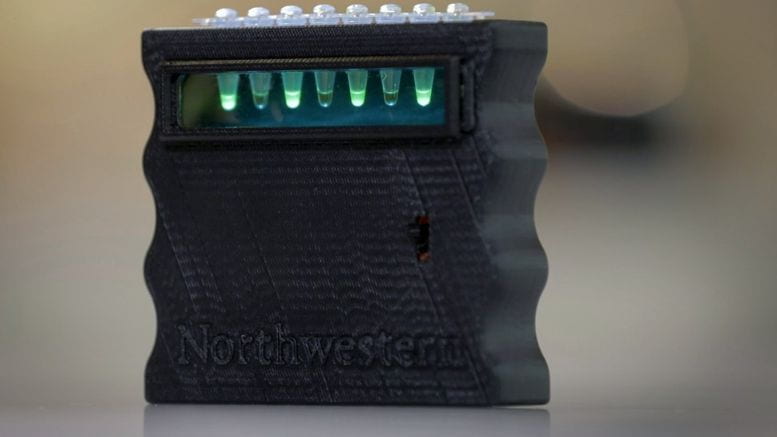Pilot study will enable Chicago-area residents to test for lead, copper and PFAS
Later this year, 350 Chicago-area households will receive hand-held, easy-to-use test kits to assess their home water quality.
Developed by Northwestern University researchers, the tests use cell-free biosensors and a single-drop water sample to provide an easy-to-read positive or negative result for a variety of contaminants.
The pilot study will follow a phased roll-out. The test for lead is already available and will be distributed later this year. A test for copper will be distributed during the second or third year of the study. And a test for per- and polyfluoroalkyl substances (PFAS), which is still in development at Northwestern, will be available in the fourth year.
The National Science Foundation (NSF) awarded the study a $3 million grant, announced today, through its “Using the Rules of Life to Address Societal Challenges” program. The working group and pilot study are co-led by the husband-wife team Julius Lucks and Sera Young.
“The end goal is to empower people with knowledge: The knowledge of whether or not lead is in their water,” said Young, a water insecurity expert and associate professor of anthropology and global health.
“These tests do this by offering the same certainty and simplicity found in at-home COVID-19 and pregnancy tests. Information is power, and these tests make invisible issues visible. We hope that families and organizations can use the tests in their daily activities to understand where the problems are in Chicago and that policymakers can take action based on the information they generate.”
“This grant is timely, as water quality and climate change continue to pose challenges, while the dangers of lead and PFAS are becoming more well-known,” said Lucks, an expert in synthetic biology and professor of chemical and biological engineering. “This initiative unites researchers from across the University to tackle major societal challenges related to sustainability and the environment. It’s a great example of what we can do when we learn to speak each other’s languages and work together.”
The initiative expands upon work that began within the Making Water Insecurity Visible Global Working Group.

